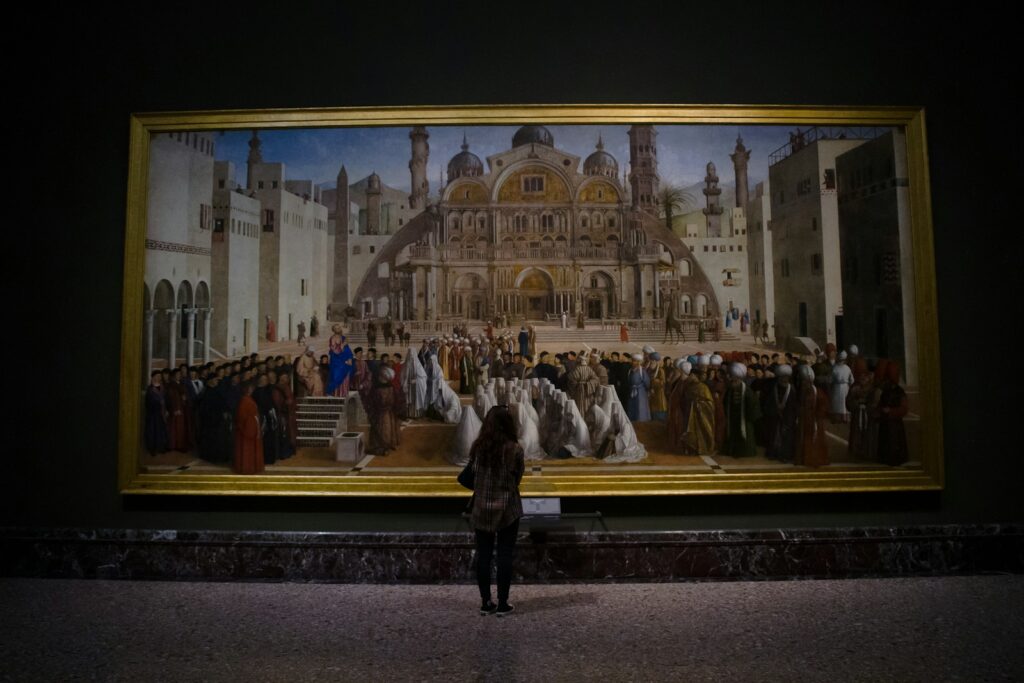Milan, Italy’s fashion capital, is a city where the pulse of creativity, history, and modernity beats in unison. Known for its high-end fashion districts and vibrant art scene, Milan also boasts remarkable historical sites that tell tales of its illustrious past. Here’s a curated list of the 10 best things to do in Milan, offering a blend of cultural immersion, artistic exploration, and unforgettable experiences.
1. Duomo di Milano: A Marvel of Gothic Splendor
Recommended Time Spent: 2-3 hours
Duration: The visit can be self-paced, but guided tours are available lasting approximately 1 hour.
Cost: Access to the cathedral is free; rooftop access costs around €13 for the stairs and €20 for the elevator.
How to Get There: The Duomo is centrally located in Milan, easily accessible by metro (Duomo station), tram, or bus.
The Duomo di Milano, an iconic symbol of Milan, is not just a cathedral but a masterpiece that encapsulates the grandeur of Gothic architecture. This awe-inspiring edifice, adorned with thousands of statues and intricate spires, offers visitors a deep dive into Milan’s rich historical and cultural tapestry. Whether you choose to explore the opulent interiors, marvel at the stunning stained glass windows, or climb up to the rooftop for a breathtaking view of Milan against the backdrop of the Alps, the Duomo promises an unforgettable experience.
Visitors should allocate time to appreciate both the interior’s artistry and the panoramic vistas from the rooftop, where the intricacies of the Gothic architecture can be admired up close. This activity is perfect for history buffs, architecture enthusiasts, and photographers looking to capture the essence of Milan. For an optimized experience, visiting early in the morning or late in the afternoon can help avoid the crowds, making your visit more serene. Don’t forget to dress appropriately, as respectful attire is required to enter the cathedral.
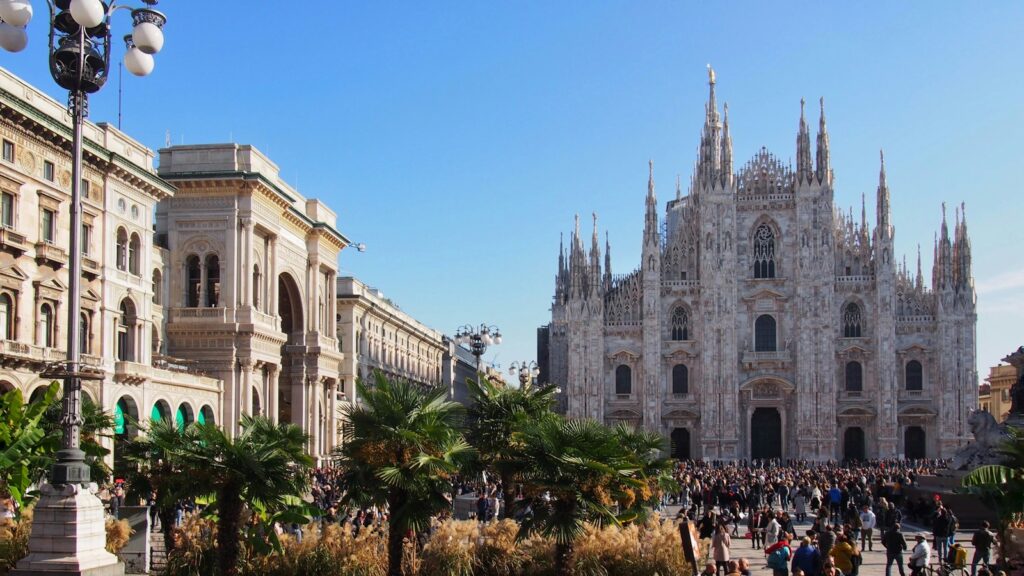
2. Galleria Vittorio Emanuele II: Italy’s Oldest Active Shopping Arcade
Recommended Time Spent: 1-2 hours
Duration: Visits can be leisurely self-guided
Cost: Free to browse, shopping and dining costs vary
How to Get There: Located adjacent to the Duomo di Milano, it’s easily reachable on foot from the Duomo metro station.
Stepping into the Galleria Vittorio Emanuele II is like walking through a portal to the 19th century, where the elegance and grandeur of Italy’s oldest active shopping arcade envelop you. With its magnificent glass dome and intricate mosaics underfoot, the Galleria is not just a shopper’s paradise but a landmark of architectural beauty. It houses some of the most luxurious brands, alongside historic cafes and restaurants, making it a must-visit for fashion enthusiasts and history lovers alike.
As you wander through this opulent arcade, expect to be dazzled not only by the high-end fashion boutiques but also by the ambiance that exudes a timeless charm. The Galleria is perfect for those looking to indulge in a bit of retail therapy, enjoy a classic Milanese aperitivo, or simply soak in the atmosphere of one of Milan’s most iconic structures. To truly savor the experience, take a moment to stand beneath the central dome, look up, and let the beauty of the architecture sink in. For an added Milanese tradition, find the mosaic of the bull on the floor and spin on your heel on its testicles for good luck.
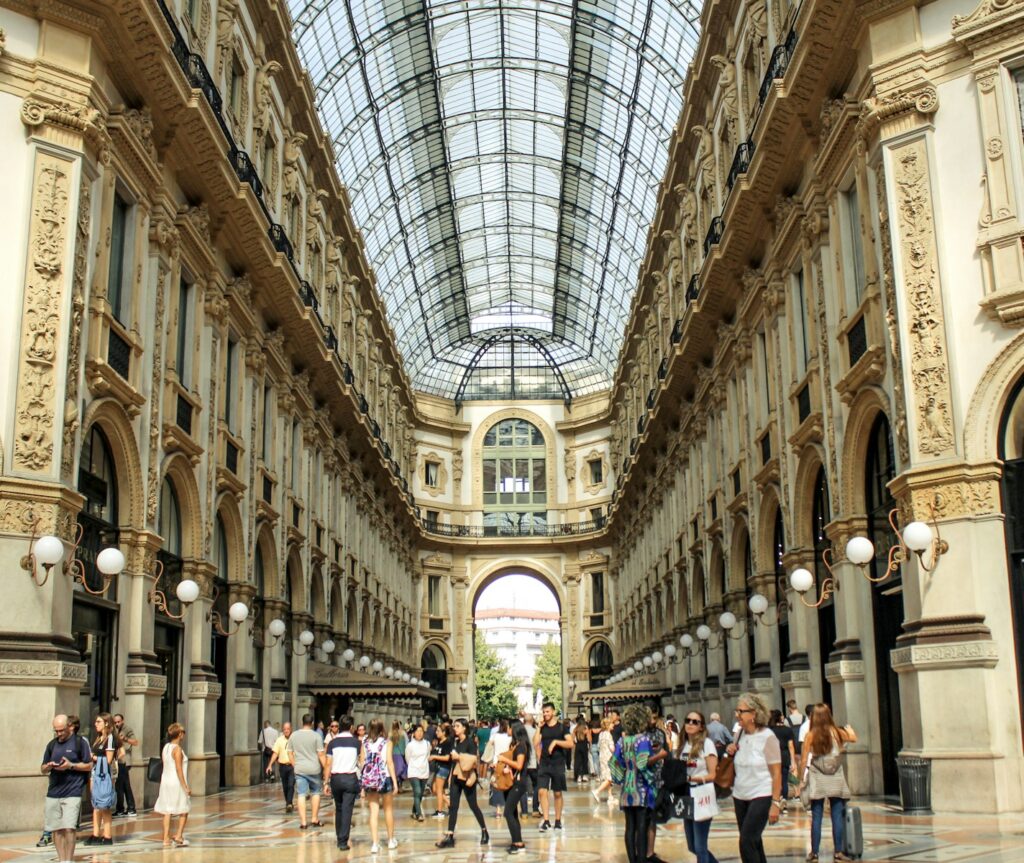
3. See The Last Supper With Your Own Eyes
Recommended Time Spent: 1-1.5 hours
Duration: Viewing times are typically limited to 15 minutes
Cost: Approximately €15 per person, including the reservation fee
How to Get There: Located at Santa Maria delle Grazie, it’s accessible by tram (lines 18 and 24) or metro (Conciliazione or Cadorna stations).
Experiencing Leonardo da Vinci’s “The Last Supper” in person is akin to stepping into a moment frozen in time, where art, history, and spirituality converge. This masterpiece, one of the most renowned frescoes in the world, offers a glimpse into Leonardo’s genius, capturing the emotional intensity and dynamic narrative of a pivotal biblical scene. The opportunity to see “The Last Supper” with your own eyes is not just a visit; it’s a pilgrimage for art lovers, history enthusiasts, and anyone moved by the profound beauty of human creativity.
Due to its fragile state, viewing “The Last Supper” is strictly regulated, making advance booking a necessity—often months ahead. This activity is ideal for those who appreciate Renaissance art and are interested in the innovative techniques Leonardo employed, which have allowed this masterpiece to captivate audiences for centuries. To enhance your visit, consider hiring an audio guide or joining a guided tour to gain deeper insights into the painting’s history, symbolism, and the innovative preservation efforts that keep it alive for future generations. Remember, the time inside is limited, so cherish every minute in the presence of this iconic work.
Piazza Gae Aulenti: Milan’s Modern Marvel
Recommended Time Spent: 1-2 hours
Duration: Leisurely, self-paced
Cost: Free to explore
How to Get There: Easily accessible by Milan’s public transport, particularly the Garibaldi FS metro and train station.
Nestled within the heart of Milan’s modern skyline, Piazza Gae Aulenti stands as a testament to contemporary design and urban development. Named after the renowned Italian architect Gae Aulenti, this elevated square is a symbol of Milan’s forward-thinking approach, blending high-tech architecture with sustainability. Surrounded by futuristic skyscrapers, including the Unicredit Tower, Milan’s tallest building, the piazza is a hub of activity, offering a unique blend of shopping, dining, and cultural experiences set against the backdrop of cutting-edge design.
Visitors to Piazza Gae Aulenti can expect to immerse themselves in a dynamic atmosphere where the energy of modern Milan is palpable. The square is perfect for architecture enthusiasts, shoppers seeking the latest trends, or anyone looking to experience Milan’s contemporary pulse. The circular layout, complete with water features and art installations, invites exploration and provides ample opportunities for photography. To optimize your visit, explore the surrounding Porta Nuova district, where renovated industrial spaces and innovative green buildings showcase Milan’s commitment to the future. Evening visits are particularly magical when the area is illuminated, highlighting the architectural marvels that define this vibrant part of the city.
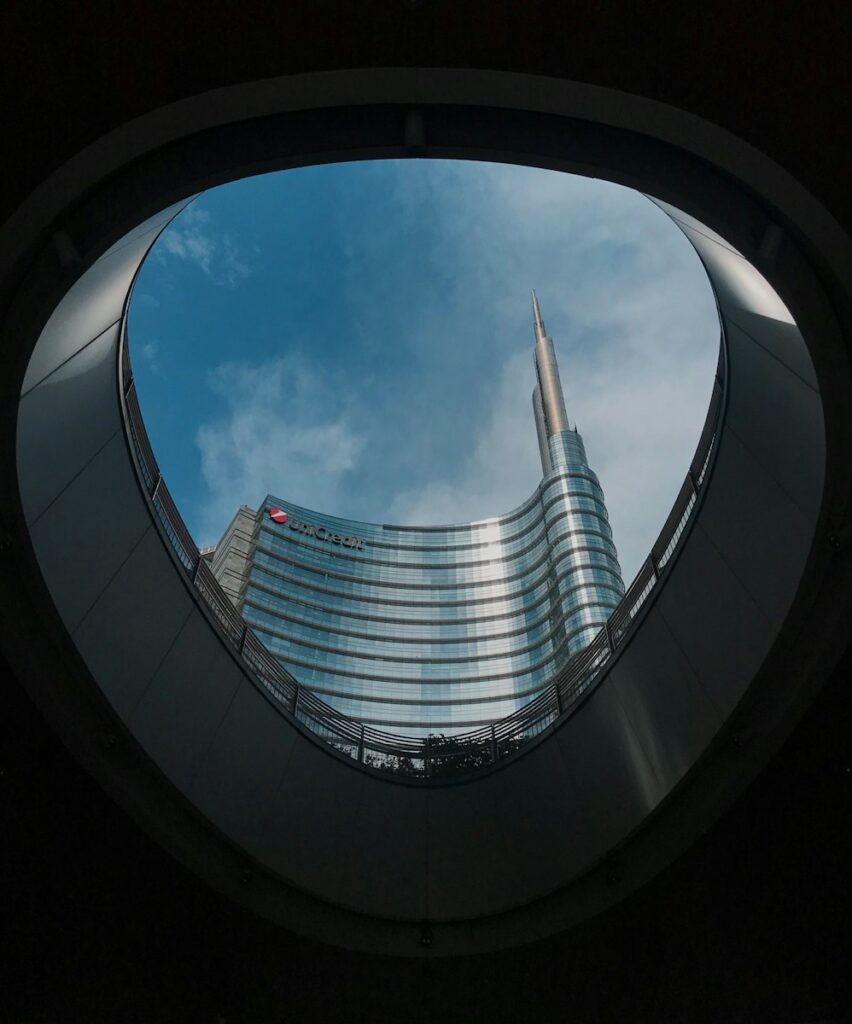
4. A Day Trip to Bergamo: A Hidden Gem Near Milan
Recommended Time Spent: Full day
Duration: Around 5-8 hours
Cost: Train tickets approximately €5-€10 one way
How to Get There: Easily accessible by train from Milan’s central station, with a journey time of about 1 hour.
Bergamo, a picturesque city nestled in the Lombardy region, offers a delightful escape from Milan’s bustling pace. Divided into two distinct parts—the Città Alta (Upper Town) and Città Bassa (Lower Town)—Bergamo captivates visitors with its rich history, well-preserved medieval architecture, and breathtaking views of the Italian Alps. The journey to Bergamo is a short and scenic train ride, making it an ideal day trip for those looking to explore more of Italy’s diverse landscapes and historical sites.
Upon arrival, head straight to the Città Alta, accessible by a funicular, where cobbled streets, ancient walls, and the majestic Piazza Vecchia await. Here, history enthusiasts can marvel at the Basilica di Santa Maria Maggiore and the Colleoni Chapel, while art lovers explore the Accademia Carrara. Don’t miss a walk along the Venetian walls, a UNESCO World Heritage site, offering panoramic views of the surrounding valleys. Bergamo is perfect for those seeking a blend of culture, history, and natural beauty. Personal recommendations include trying local delicacies like polenta and casoncelli at a traditional osteria, and if time allows, a leisurely stroll through the modern and dynamic Città Bassa to experience the contrast between the old and the new. Bergamo promises a fulfilling and enriching day trip, revealing the charm and history of Northern Italy beyond Milan’s city limits.
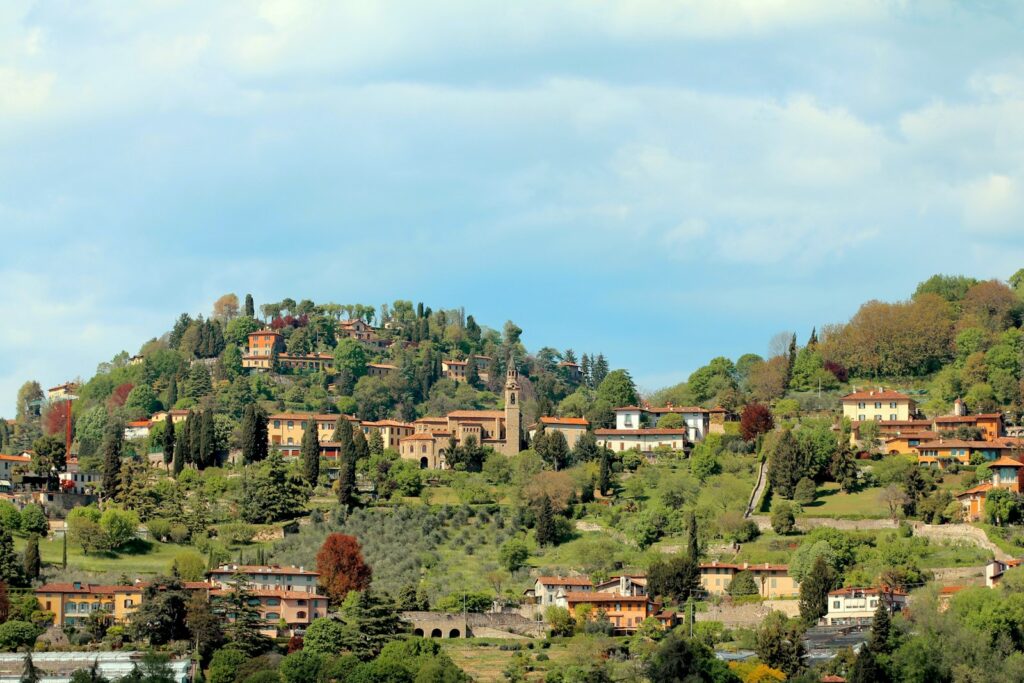
5. Exploring Lago Maggiore: A Serene Escape from Milan
Recommended Time Spent: Full day to overnight
Duration: Day trip or longer if exploring islands and surrounding towns
Cost: Train tickets to Stresa approximately €10-€20 one way; additional costs for boat tours vary
How to Get There: Direct train from Milan Central Station to Stresa, the main town on Lago Maggiore, in about 1 hour.
Lago Maggiore, Italy’s second-largest lake, is a breathtaking destination that offers a tranquil retreat from the urban energy of Milan. With its crystal-clear waters set against the backdrop of the Alps, the lake straddles the border between Italy and Switzerland, presenting a landscape ripe with verdant gardens, opulent villas, and quaint lakeside towns. A day trip to Lago Maggiore, particularly to the town of Stresa, provides a gateway to the lake’s wonders, including the enchanting Borromean Islands, each boasting its own unique allure.
Upon reaching Stresa, visitors are greeted with a picturesque scene that seems to blend seamlessly into the azure waters of the lake. From here, you can embark on a boat tour to explore the Borromean Islands—Isola Bella, with its baroque palace and elaborate gardens; Isola Madre, known for its botanical garden; and Isola dei Pescatori, the only inhabited island with a charming fishing village. Lago Maggiore is ideal for nature lovers, history enthusiasts, and those seeking a peaceful escape amidst natural beauty. To make the most of your visit, consider an overnight stay to fully immerse yourself in the serene atmosphere, enjoy leisurely walks along the lakefront, and savor the local cuisine, which reflects the rich culinary traditions of both Lombardy and Piedmont.
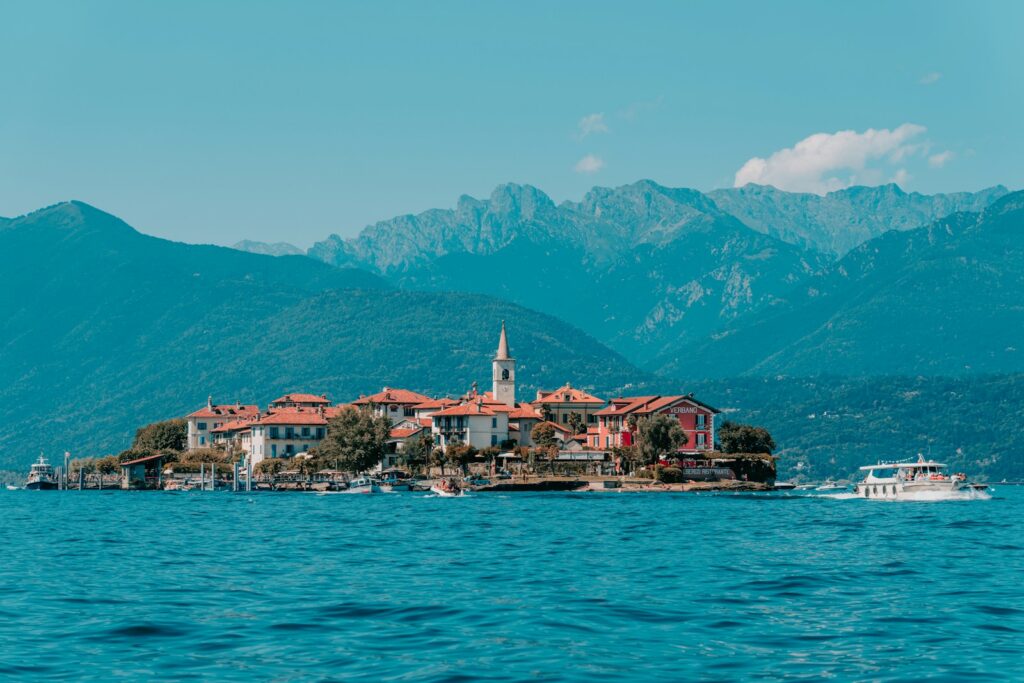
6. Discovering the Chiesa di Santa Maria presso San Satiro: Milan’s Architectural Illusion
Recommended Time Spent: 30 minutes to 1 hour
Duration: A quick visit, but take time to absorb the art and architecture
Cost: Free entry
How to Get There: Located in the heart of Milan, within walking distance from the Duomo, easily accessible by foot or via Milan’s public transport system.
Nestled in the bustling streets of Milan, a short stroll from the grandeur of the Duomo, lies the Chiesa di Santa Maria presso San Satiro. This church, dating back to the 15th century, might seem unassuming from the outside, but it houses one of the city’s most remarkable feats of architectural ingenuity. Renowned for Bramante’s false apse—a masterful example of trompe-l’œil that creates the illusion of depth in a surprisingly shallow space—this church offers visitors a unique glimpse into the innovative spirit of the Renaissance in Milan.
The Chiesa di Santa Maria presso San Satiro is perfect for art and architecture enthusiasts keen on discovering the hidden gems that lie beyond Milan’s more famous landmarks. The church’s interior, aside from the illusionary apse, contains exquisite frescoes and artworks that merit a closer look. To truly appreciate the craftsmanship and historical significance of this site, take a moment to stand before the false apse, letting the visual trickery unfold before your eyes. This activity is a must-do for those looking to delve deeper into Milan’s rich artistic heritage, offering a peaceful respite from the city’s more crowded attractions. Personal recommendation: Visit during quieter hours to fully enjoy the tranquility and beauty of this architectural marvel.
7. Exploring Sforzesco Castle: A Glimpse into Milan’s Storied Past
Recommended Time Spent: 2-3 hours
Duration: Spend a half-day exploring the castle and its museums
Cost: Entry to the castle grounds is free; museum pass is about €5-€10
How to Get There: Accessible by metro (Lanza, Cairoli, or Cadorna stations), tram, or bus, located in the center of Milan, near Parco Sempione.
The imposing Sforzesco Castle, once a symbol of the power and prestige of Milan’s ruling Sforza family, now serves as a cultural hub, housing several of the city’s most important museums and art collections. With its red-brick walls and robust towers, the castle invites visitors to step back in time to explore the intricate history of Milan and the artistic legacy that flourished under the Sforza dynasty. The castle complex includes museums dedicated to ancient art, musical instruments, decorative arts, and Egyptian antiquities, making it a treasure trove for history buffs, art lovers, and curious explorers alike.
A visit to Sforzesco Castle is not merely about walking through its vast halls and courtyards; it’s an opportunity to immerse yourself in the rich tapestry of Milanese history and culture. From Michelangelo’s last sculpture, the Rondanini Pietà, to the intricately designed frescoes in the Sala delle Asse by Leonardo da Vinci, the castle offers a profound glimpse into the Renaissance period. For an optimized experience, consider joining a guided tour to gain deeper insights into the castle’s history and the stories behind its artifacts. Don’t forget to allocate time to wander through the adjacent Parco Sempione, where the castle’s grandeur is complemented by serene landscapes, making it a perfect spot to reflect on your journey through Milan’s past.
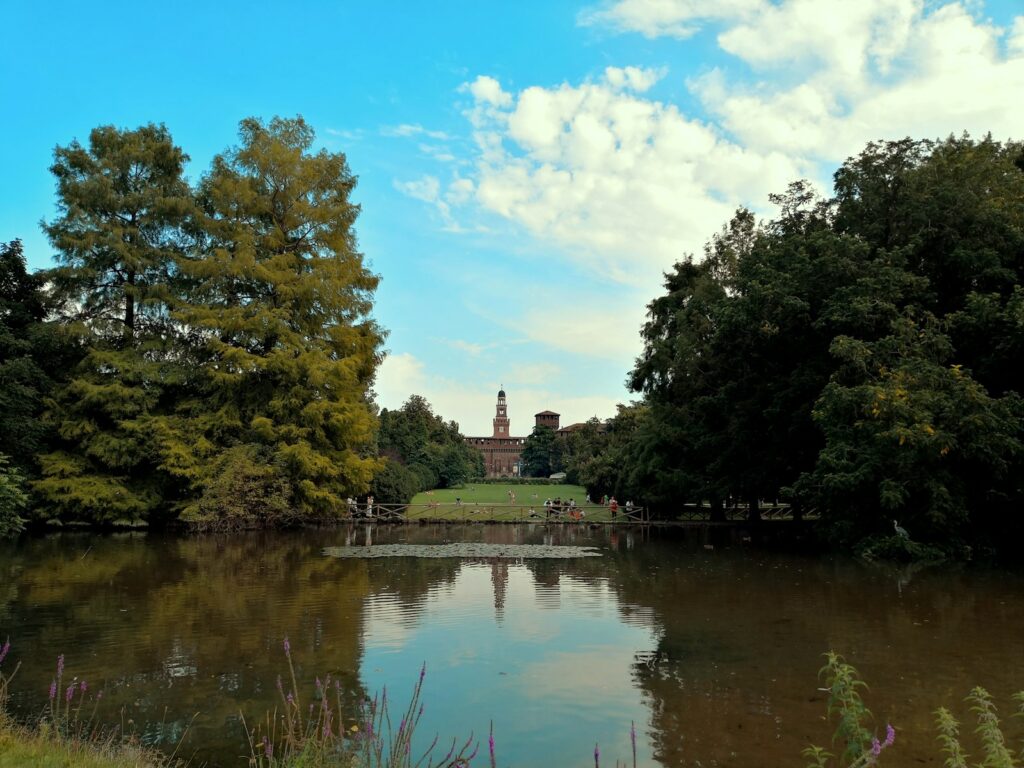
8. Santa Maria del Carmine: A Sanctuary of Art and Serenity
Recommended Time Spent: 1 hour
Duration: A brief visit to soak in the art and architecture
Cost: Free entry
How to Get There: Situated in the Brera district, easily reachable by foot from the Brera Art Gallery or by public transport, with tram and bus stops nearby.
Tucked away in the artistic heart of Milan’s Brera district, the Church of Santa Maria del Carmine presents a peaceful retreat from the bustling city life. This hidden gem, less frequented by tourists, offers a moment of tranquility amidst beautiful surroundings, allowing visitors to admire religious art and architecture without the crowds. The church, dating back to the 15th century, showcases a blend of Gothic and Renaissance styles, with later Baroque additions adding to its aesthetic appeal. Inside, the nave opens up to reveal stunning frescoes, intricate stained glass, and a serene atmosphere that invites reflection and admiration.
Santa Maria del Carmine is ideal for those interested in exploring Milan’s religious sites beyond the more famous Duomo. It appeals to art enthusiasts eager to discover the works of lesser-known artists and to anyone seeking a quiet moment of beauty. While visiting, take the time to observe the details of the frescoes and the play of light through the stained glass windows. Personal recommendations include visiting during the early morning or late afternoon when the light accentuates the art’s beauty, making the experience even more enchanting. This church is a testament to Milan’s rich cultural and spiritual heritage, offering a serene space for contemplation and artistic appreciation.
